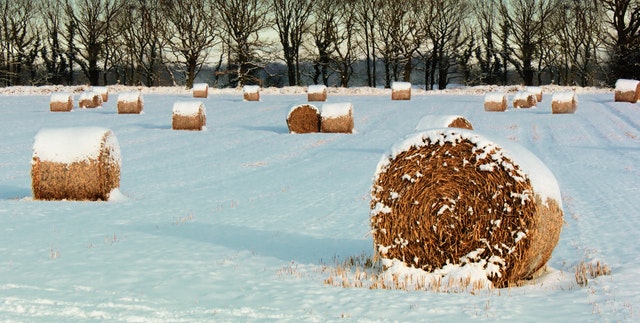The Buzz
Winterizing Your Hive
Winter is coming! That means it’s time to start winterizing your hives. This can be a very simple process, or you can take additional steps in order to help your hive survive. Either way is fine, but we’re going to cover a couple of different ways to winterize your beehives this year.
Treating
Treating your hive is a part of the wintering process. It can make or break your chance at surviving the winter. At B-Y’s, we do this starting the end of August, while a lot of beekeepers will do this later in September. There are multiple different types of treatment you can give to your colony to help keep the varroa count. The treatment that we recommend is Formic Acid treatments. To treat your hive with Formic Acid, all you do is place two of the pre-filled pads into your upper brood box, one on their side of the box, and let them sit for 21 days. We recommend removing them after the 21 day period, but you can leave them throughout winter if need be.
Feeding
A common question we get is what and when to feed your bees throughout the winter. The quick answer is, if your bottom brood box has at least 4 frames of honey, and your top box has at least 6-8 frames of honey, you should not have to worry about feeding your bees. If you have less than this, you may need to consider feeding your bees a sugar syrup throughout winter. You can do this by adding a top feeder (it looks like a super, but with troughs for the syrup). There are many other DIY ways to feed your bees sugar syrup throughout the winter, but you have to be careful about adding additional empty space, as your bees will have to work harder to heat the area, and empty space usually means additional moisture.
Wrapping
Another big part of winterizing is wrapping your hives. Depending on where your hives are located, and the climate of the area you’re in, you may want to wrap your hives. There are many methods to wrapping them. There are premade wraps you can get made out of waxed cardboard, or plastic insulation wraps, like the BeeCozy. We have both available here at B-Y’s. There are many other ways of wrapping your hives, such as using tar paper, or even building wooden covers for your hives. As to when you should start wrapping your hives, we recommend that you wrap them when it’s been a constant 5 degrees Celsius or below for a few days straight. If there’s a chance of the weather warming up above that, you want to avoid wrapping as it can heat your hive up too much and your bees might want to start working, and we want to avoid that.
Placing
Generally, you don’t want to move your hive too much, however, depending on the conditions of your bee yard, you may want to move your hive to an area that isn’t as prone to snow buildup, damp conditions, or gusts of wind. If you don’t have a place to move your hive, do not worry about it. There are ways to ensure that you can protect your hive from the elements, such as the above topic, wrapping. A great preventative measure to ensure your hive stays dry inside is to add a moisture board above your top cover to help keep the humidity down in the hive. Some people also slightly place their hives on an incline, with the entrance on the lower end, to allow any moisture or water to roll out rather than staying trapped inside your brood chamber.


